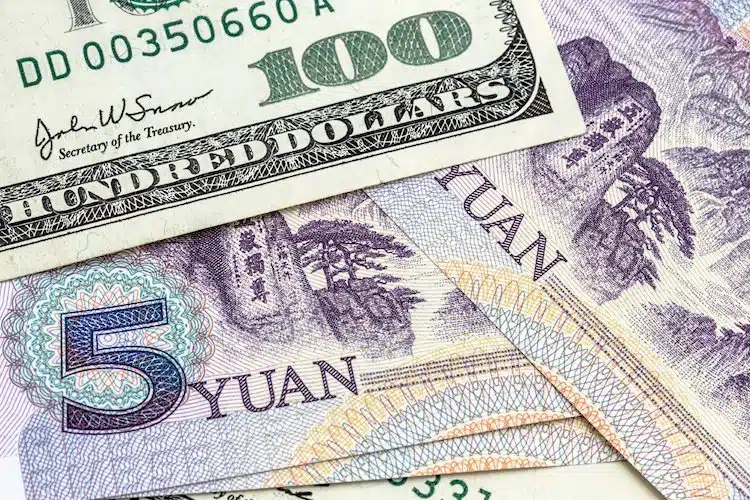In recent trade today, the People’s Bank of China (PBOC) set the yuan at 6.8679 following the previous fix of 6.8606 and the prior close of 6.8690.
The yuan is a critical part of China’s economy and global trading relationships. Understanding how it is controlled and calculated sheds light on the nation’s financial health and governmental policies. Carefully controlled by the government, China’s onshore yuan (CNY) differs from the less restricted offshore one (CNH). The underlying cause of this can be traced back to the establishment of the People’s Bank of China (PBOC), which sets the key reference rate for the onshore currency on each trading day, a so-called daily midpoint fix.
The process is relatively straightforward. Every morning, the PBOC sets the benchmark rate based on the yuan’s previous day’s closing level and quotations taken from interbank dealers. The PBOC initially liberalized the yuan in 2005 and loosely pegged it to a basket of currencies, including the US dollar, yen, and euro. Each day’s midpoint allows market participants to understand better the daily fluctuations in the rate and provide a level of transparency for both domestic and international investors. As such, the daily fixing offers a crucial insight into the Chinese government’s policy intentions.
China has long been known for its strict control of the yuan’s rate on the mainland. By managing the onshore rate, the PBOC can maintain a measure of control over the currency and directly influence China’s economy. Notably, the strict management of the yuan avoids some of the problems that come with more flexible currencies, such as currency devaluation or inflation crises, but it also restricts competition for the currency and potentially hampers China’s response in moments of economic crisis. Conversely, the offshore yuan (CNH) is allowed to trade outside mainland China and is subject to much fewer restrictions than the onshore yuan.
The differences between the onshore and offshore rates arise primarily from the unique features and different trading environments of each market. While the tightly controlled onshore yuan is subject to strict foreign exchange regulations and capital controls, the offshore yuan is not. As a result, the exchange rate of the offshore yuan is influenced by market factors like supply and demand, making it more flexible and responsive to economic developments. Ultimately, the divergence between the two rates reflects China’s efforts to balance its domestic and international economic objectives.
The onshore and offshore yuan markets have grown rapidly in recent years, with total daily trading volume reaching around $95 billion in 2020, an increase of more than 30% compared to 2019. This indicates a thriving appetite for the currency and a gradually maturing market. Moreover, as China’s economy continues to evolve, changes to the yuan’s value and the daily midpoint fixing mechanism can be expected. The Chinese government may also look at ways to align the onshore and offshore rates further.
In the meantime, the yuan’s recent trajectory can be seen as a testament to the Chinese government’s currency control measures. Despite periods of economic uncertainty and global upheaval, the tightly managed onshore rate has provided a level of stability that other currencies in the market have struggled to maintain. However, whether the PBOC’s stringent control can ensure the yuan’s long-term success remains to be seen.
In conclusion, the PBOC’s approach to managing the yuan has generated mixed reactions from different camps. While some argue that a tightly controlled currency allows China to maintain economic stability, others contend that it stifles internal market competition and potentially hampers the country’s long-term financial health. Either way, the daily midpoint fixing mechanism remains a crucial component of China’s currency strategy and will continue to influence the yuan’s value and trajectory in the years to come.


